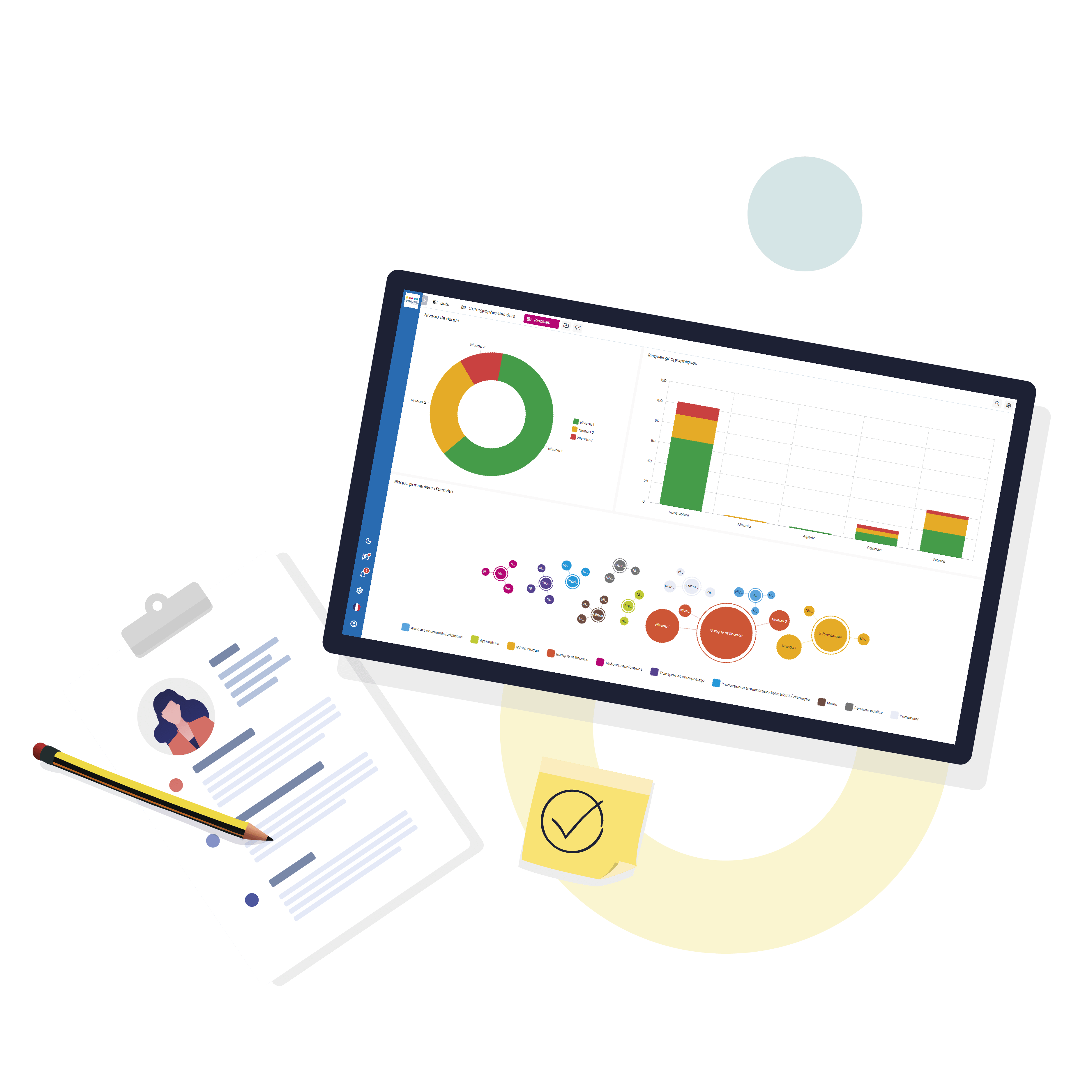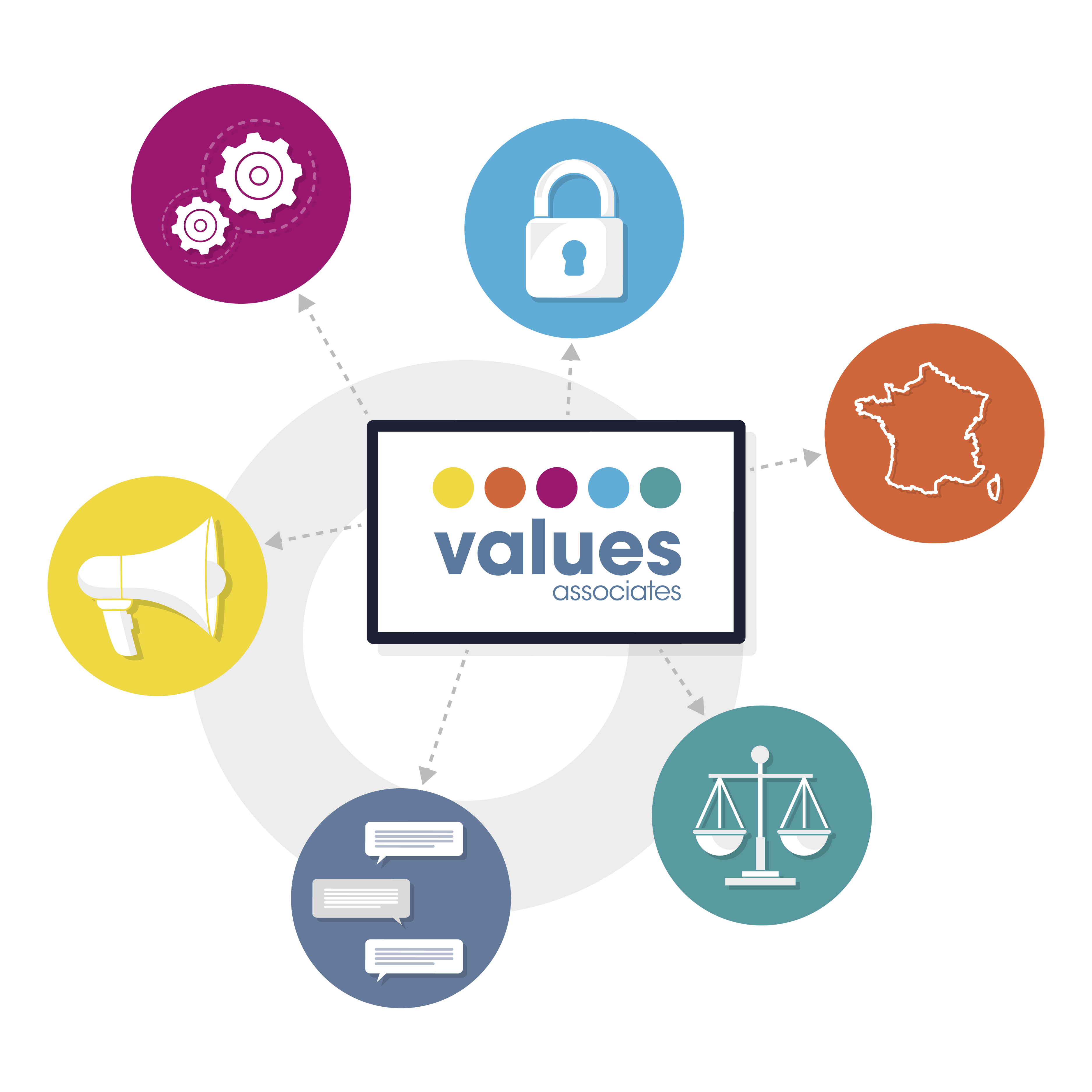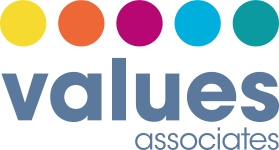sapin 2 software
Third-party integrity assessment module
The third-party integrity assessment module acts as a referral station, automatically highlighting the treatment to be applied to the various third parties.
Start assessing the integrity of your various third parties
The new third party is qualified beforehand (company name, type of third party, SIRET number, information on the planned contract, etc.). This information can be entered manually, or automatically by interfacing with another tool in your organization. A deduplication operation ensures that no similar third parties are already registered in the database.
A first level of analysis allows us to categorize the third party’s level of risk. This pre-analysis takes into account the specific features of your organization.
Manage your system with dynamic reporting
Ensure regular communication with all stakeholders through indicators and reporting covering the various stages of your third-party integrity assessment process, enabling you to evaluate and manage the risk levels of your organization’s third parties.
Manage the risks associated with each of your third parties
If more advanced due diligence is required, a third-party screening is carried out, possibly in conjunction with various market screening players.
Thanks to an API connection system, a large amount of data on the third party is uploaded, including information on its beneficial owners and managers.
A questionnaire can also be sent directly to the third party, completely securely. This questionnaire is 100% customizable to suit your organization’s context (questions, useful attachments, signatures, etc.), type of third party (supplier, customer, sponsorship or patronage beneficiary, etc.) and language.
The applicant checks the information and can implement mitigation measures. Depending on the case, requests are escalated to the compliance teams so that they can decide whether to validate or reject the third party.
Centralized, up-to-date documentation
Ensure the centralization of information and documents relating to a third party, from the main documents filed by the applicant, information requested from the third party (K-Bis, Organizational chart, etc.), analyses and proofs attesting to the compliance review carried out by the Compliance team, to the results of screening carried out by external tools, automatically transmitted by API.
They’re talking about us…
“Our collaboration with the VA teams was particularly driving to enable us to deploy our tool, ensure the management of the project in all its specific aspects but also the management of the change vis-à-vis Adoma users. The commitment of the steering and technical teams, and excellent coordination with Adoma, enabled us to achieve our objectives.”
Risk Management Manager
Interested in our
third-party integrity assessment software?
Contact us!
VALUES ASSOCIATES undertakes to keep the processed PCDs only for the time necessary for processing, plus the legal limitation periods during which the information will be archived for any accounting, tax or legal claim. Please read our privacy policy for more information on the data processing we carry out and the rights you have regarding your personal data.
What does the Sapin 2 law say about assessing the integrity of third parties?
The recommendations issued by the French Anti-Corruption Agency (AFAC) provide an important clarification in point 48, stating that “the nature and depth of the assessments to be carried out and the information to be gathered are predetermined according to the different homogeneous groups of third parties, i.e. those with comparable risk profiles, as identified by risk mapping. In this way, groups of third parties deemed to have little or no risk may not be assessed, or may be subject to a simplified assessment, while the riskiest groups require an in-depth assessment”.
To put it plainly, the AFA says that common sense dictates that these third parties should be categorized, and once this has been done, then and only then can a technical solution be found.
Rather than systematically and unreasonably resorting to a screening solution, it would be better to determine a form of referral station that would make it possible to tell, in particular in the light of the mapping of corruption risks, whether a given third party presents a low, medium or major risk. Therefore, depending on this classification, you can choose, for each third party, to apply no particular verification, to carry out a screening, or even more thoroughly, to conduct a specific audit by specialists.

Why choose our third-party integrity assessment software?
Our module enables you to initiate the assessment of third-party integrity by centralizing and qualifying crucial information (company name, type of third party, SIRET number, etc.), while avoiding duplication thanks to a deduplication operation. A first level of analysis pre-categorizes the risk, taking into account the specificities of your organization.
Our software also facilitates management of the system with dynamic, real-time reporting, enabling effective communication with all stakeholders. All information and documents relating to third parties are centralized, ensuring complete, up-to-date documentation.
The module also allows you to automatically indicate the procedure applicable to each category, and to follow the correct implementation of the required diligences.
The implementation of the solution is facilitated by a mass integration of the third parties present in your databases, leaving you to make it a mandatory step for the creation of any new third party.
Benefit from a flat rate, whatever the number of third parties to be processed and for an unlimited number of users
Limit the use of screening tools to situations that require them. These tools, which allow the collection of a large amount of information, are invoiced on a per-request basis, or on a flat-rate basis. However, regardless of the payment method, the cost is still relatively high. In addition to this cost, the time required to process the information provided by the screening solution must be taken into account.

FREQUENTLY ASKED QUESTIONS ABOUT THIRD-PARTY INTEGRITY ASSESSMENT SOFTWARE
Why is it important to assess the integrity of third parties?
The Sapin 2 law aims to prevent corruption and ensure business transparency by requiring organizations to demonstrate that they have taken reasonable steps to assess and mitigate the corruption risks associated with their third parties.
What are the main criteria for assessing the integrity of third parties?
Evaluation criteria are linked to the specificities of each organization’s corruption risk mapping. By default, they include the third party’s history of ethical and legal practices, relationships with public officials and degree of interaction with government entities, as well as judicial history and verification of past litigation or convictions for financial or ethical offences.
What tools or software can be used to assess the integrity of third parties?
Specialized software is available to automate the entire assessment process, from internal data collection or external databases, to risk analysis based on this data, complete traceability of decisions, and reporting functionalities that provide a consolidated, always up-to-date view of the situation within the organization.
How is third-party integrity assessed?
The standard process is structured into 3 main stages:
– Data collection : gather information about the third party from internal and external sources.
– Data analysis : evaluate the data collected to identify potential corruption risks and determine the level of integrity of the third party.
– Decision-making: deciding whether to accept, reject or request corrective action from the third party, based on the risk score.
What is third-party integrity assessment software?
Innovative digitization of your third-party integrity assessment system
It all starts with a series of questions for each third party: either fifteen or so standardized questions, delivered by default with the solution, or a list of customized questions, for example according to your corruption risk mapping
The questionnaire enables automatic pre-qualification of third parties, for example into 3 categories: the least risky, to whom you apply the minimum of due diligence: collation of KBis, beneficial owner, Iban, URSSAF declaration, etc.; the moderately risky, for whom you launch a Refinitiv or DDIQ type screening, or to whom you send an Antico / Lab / FT questionnaire; and finally the riskiest, for whom you carry out special due diligence, such as specific audits.
Values Associates’ Third-Party Integrity Assessment module enables you to follow your assessment process in an optimized, intuitive, collaborative and secure way.





